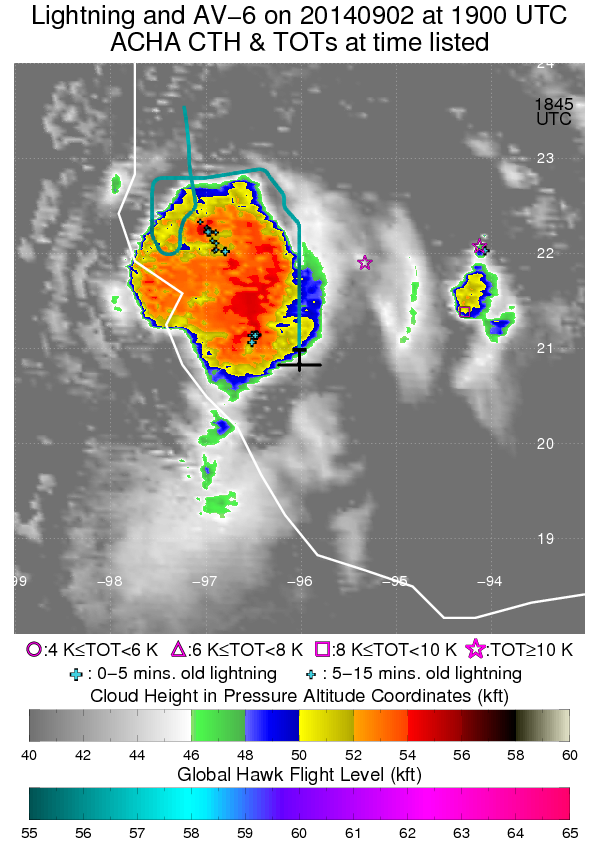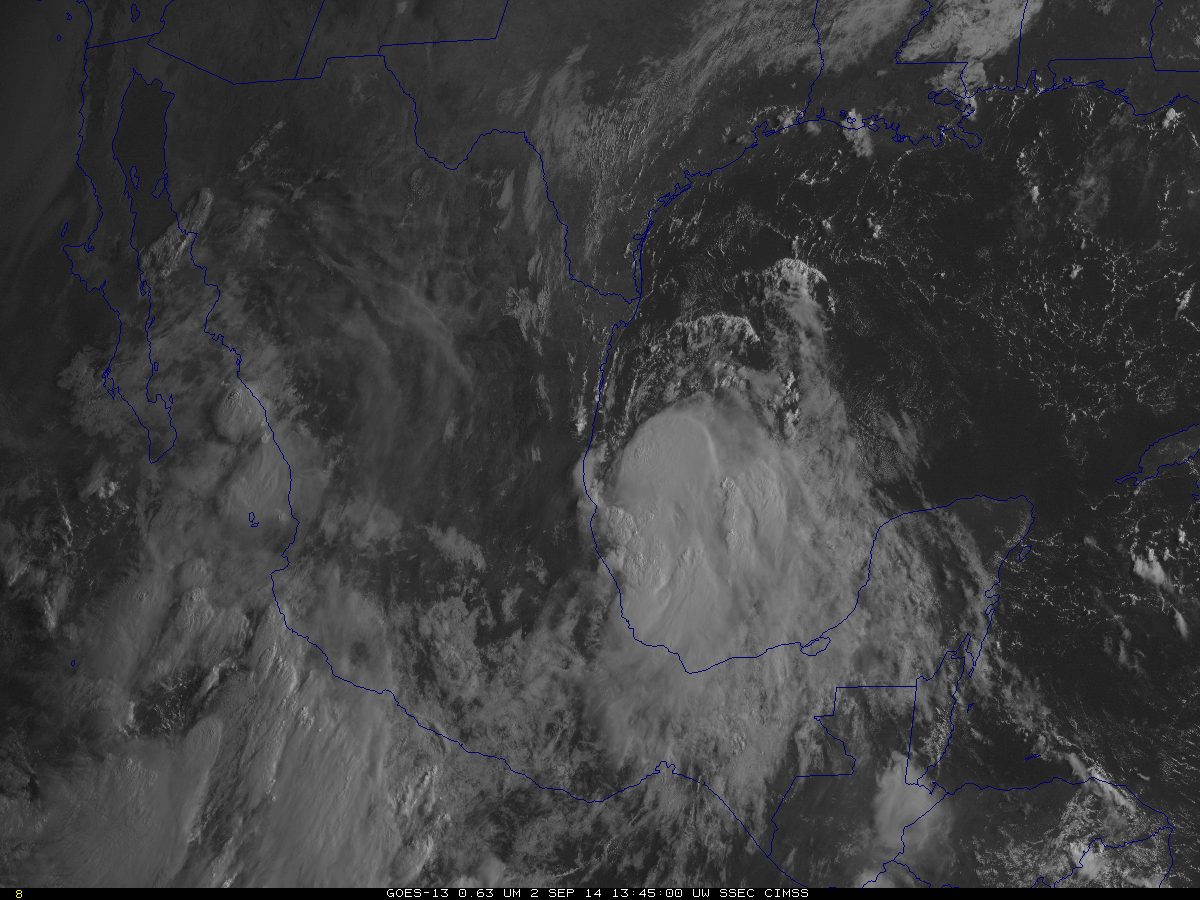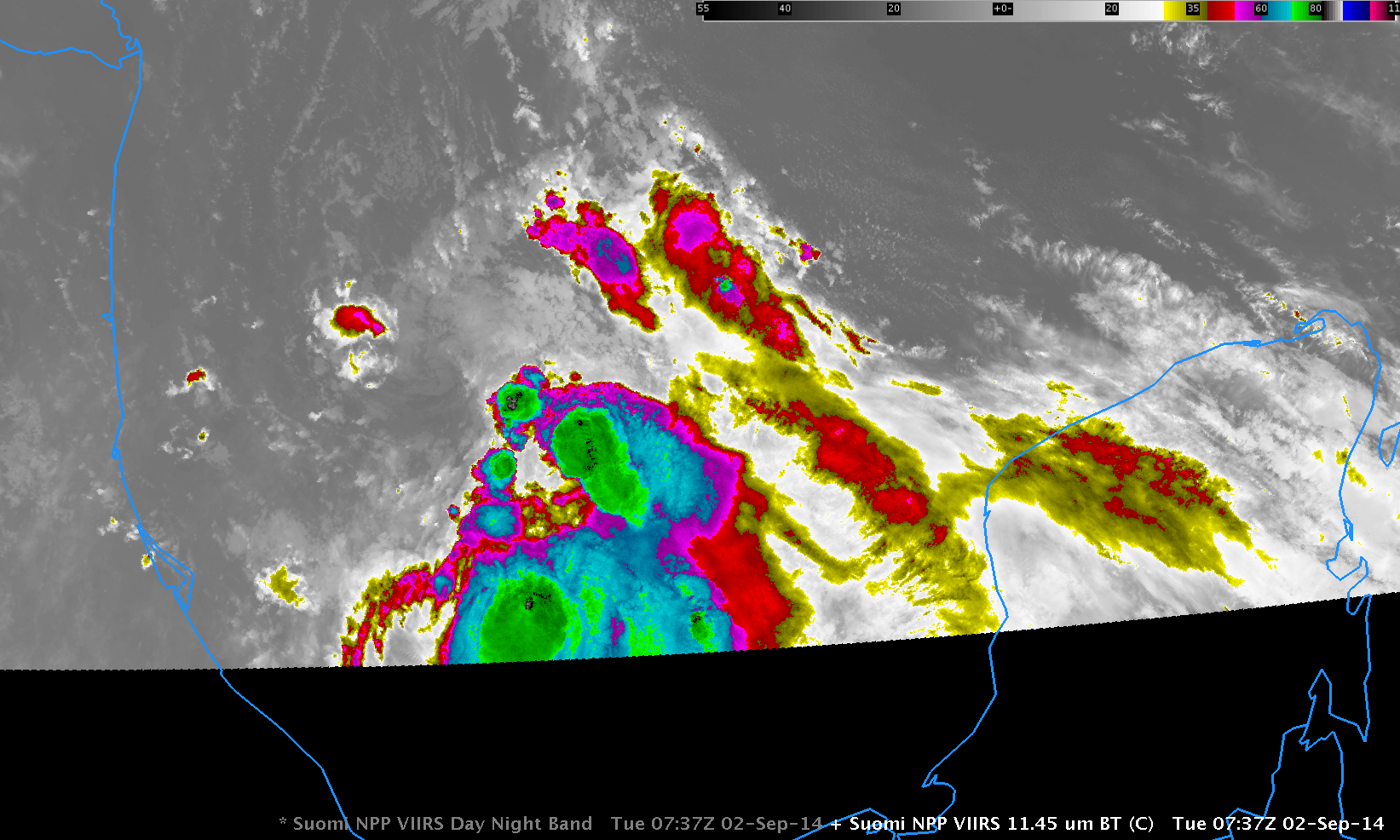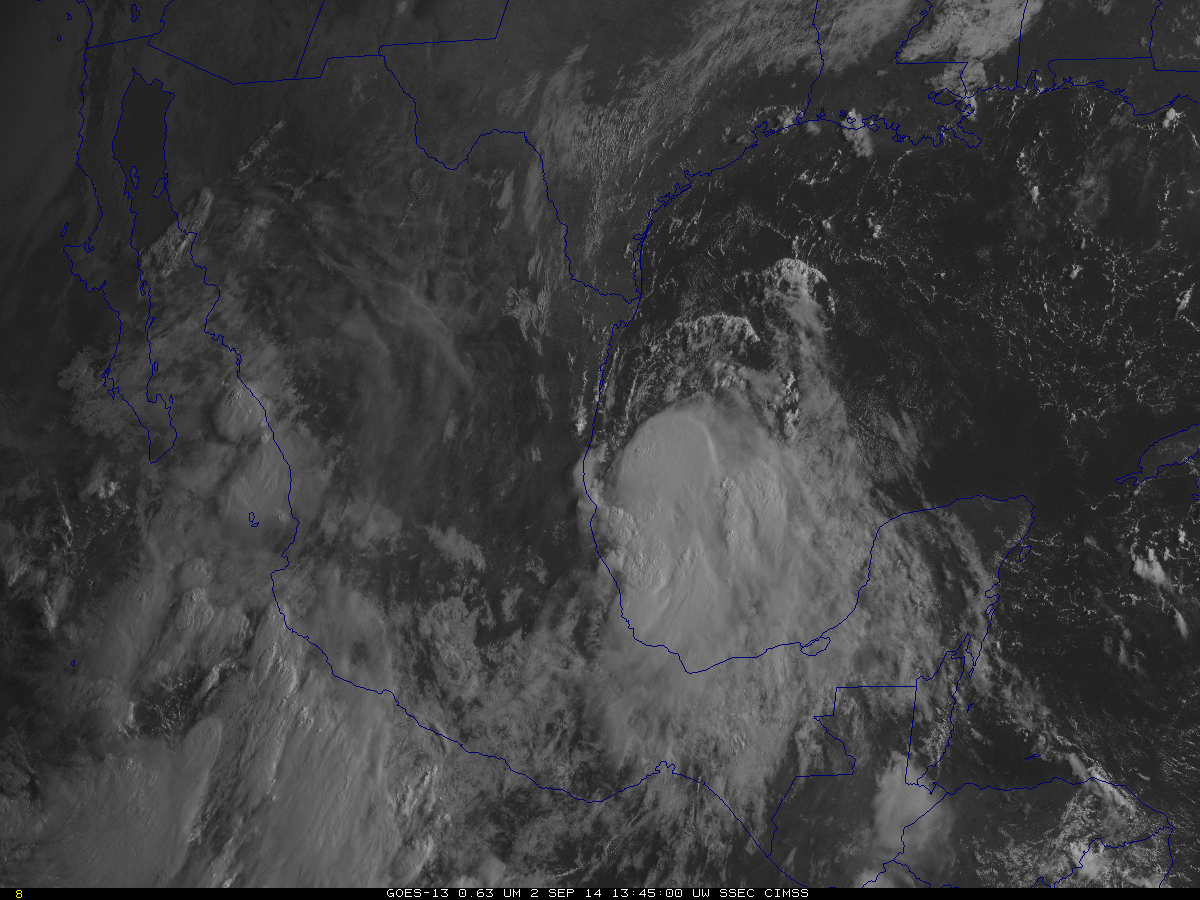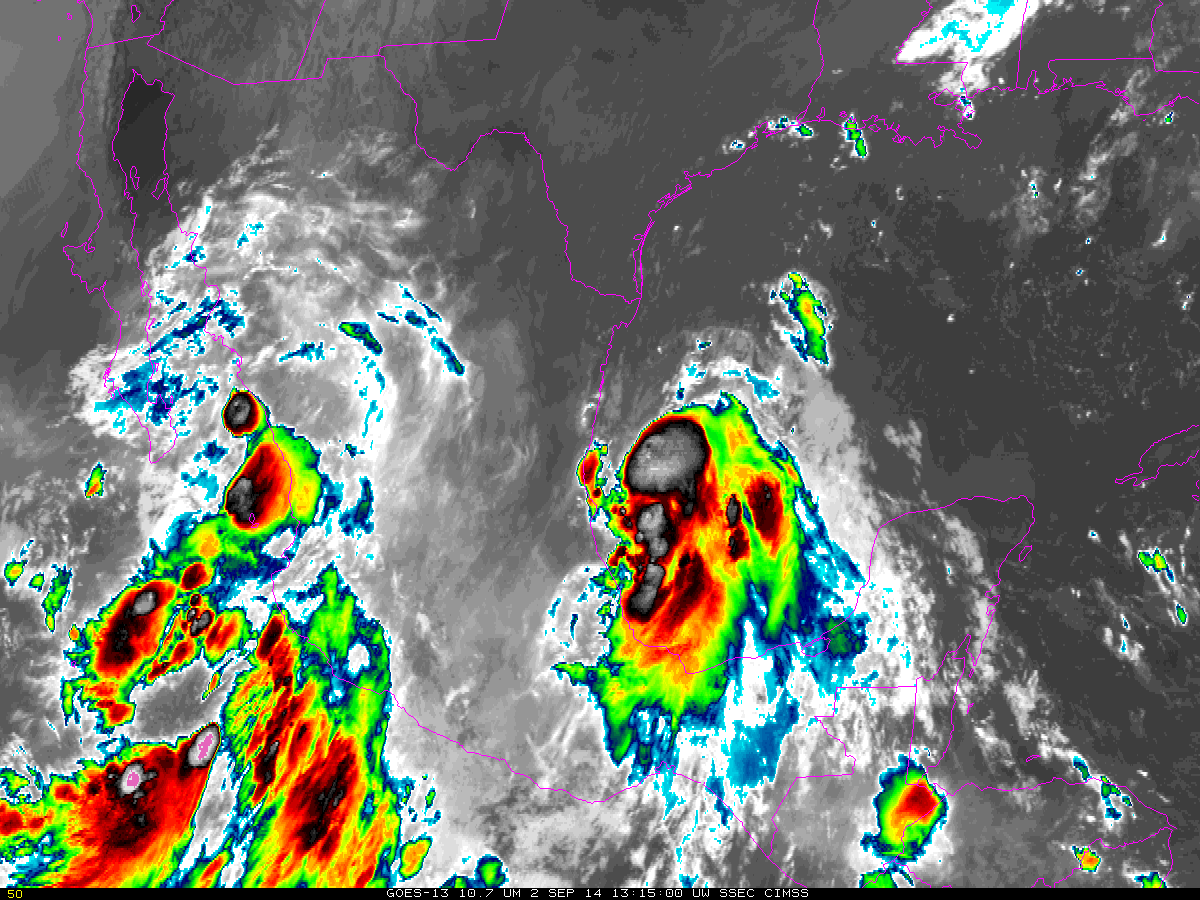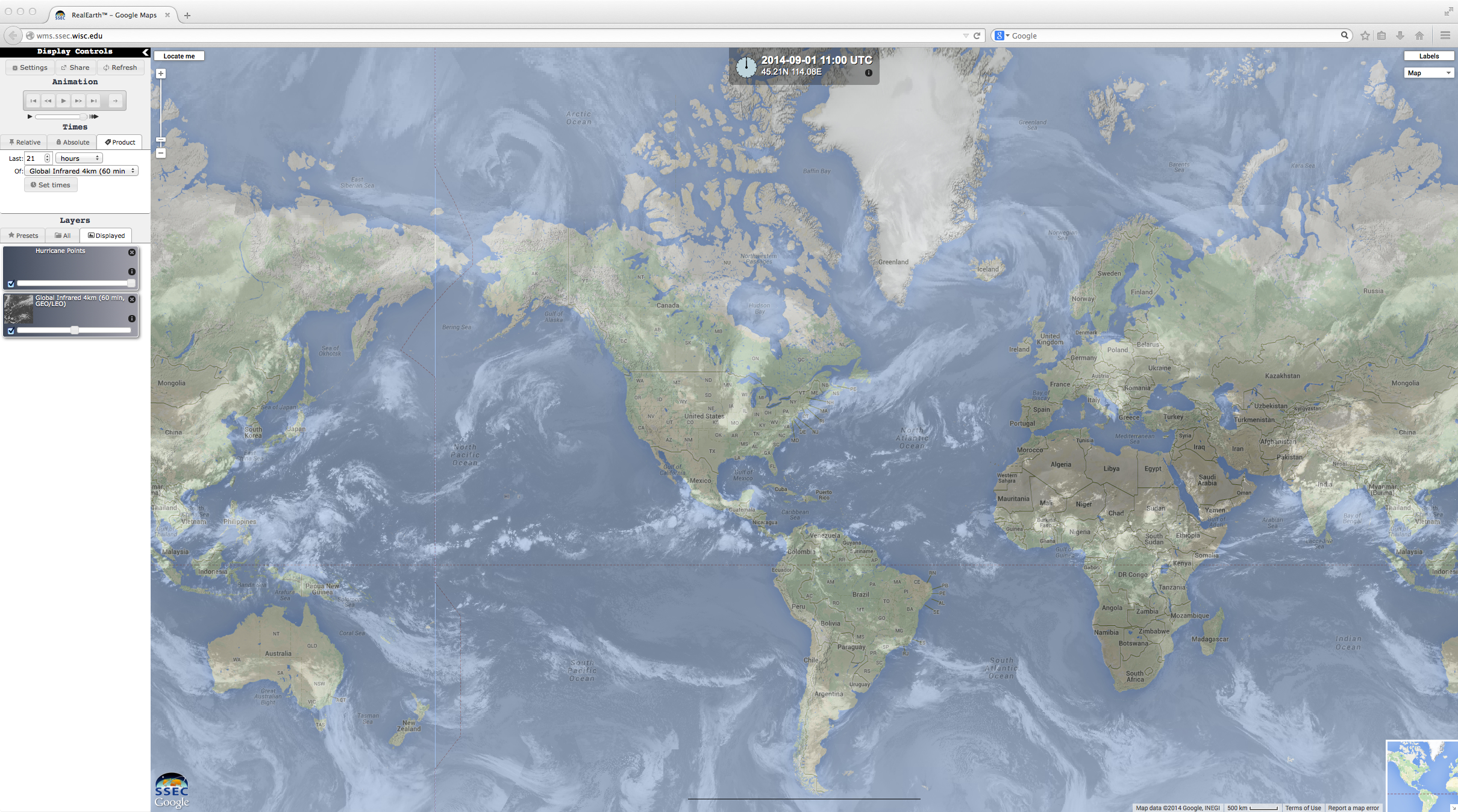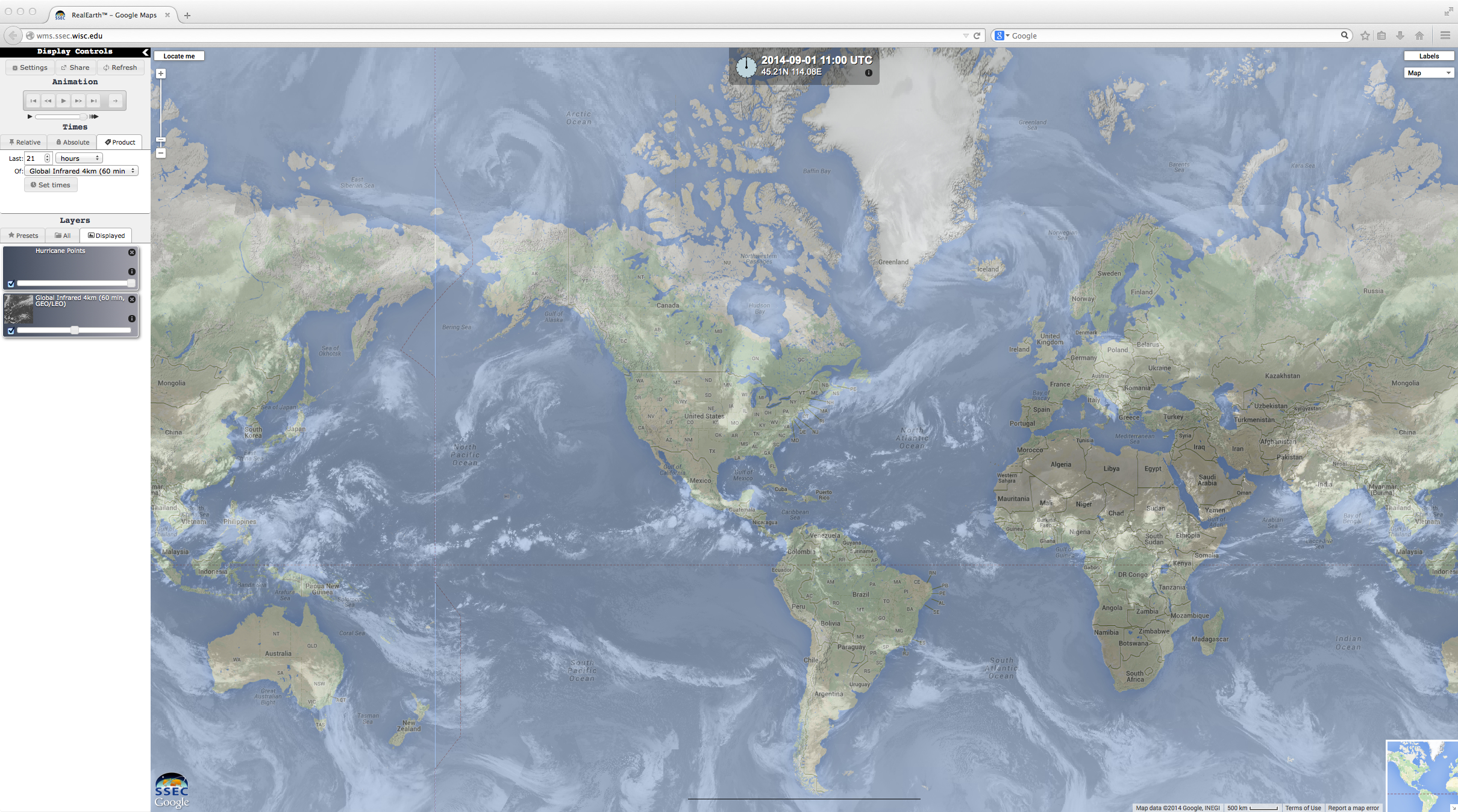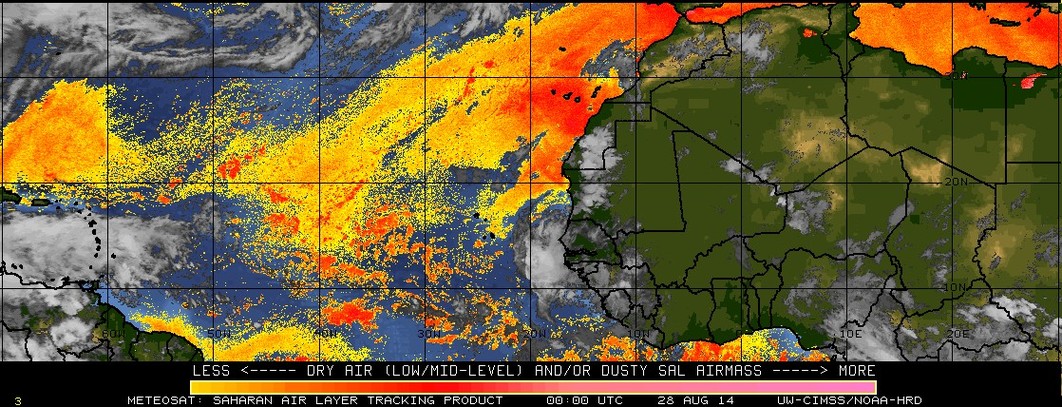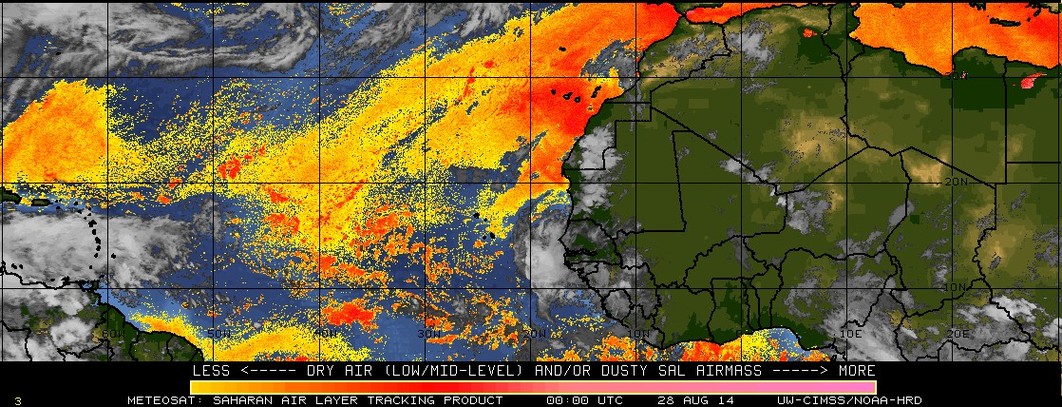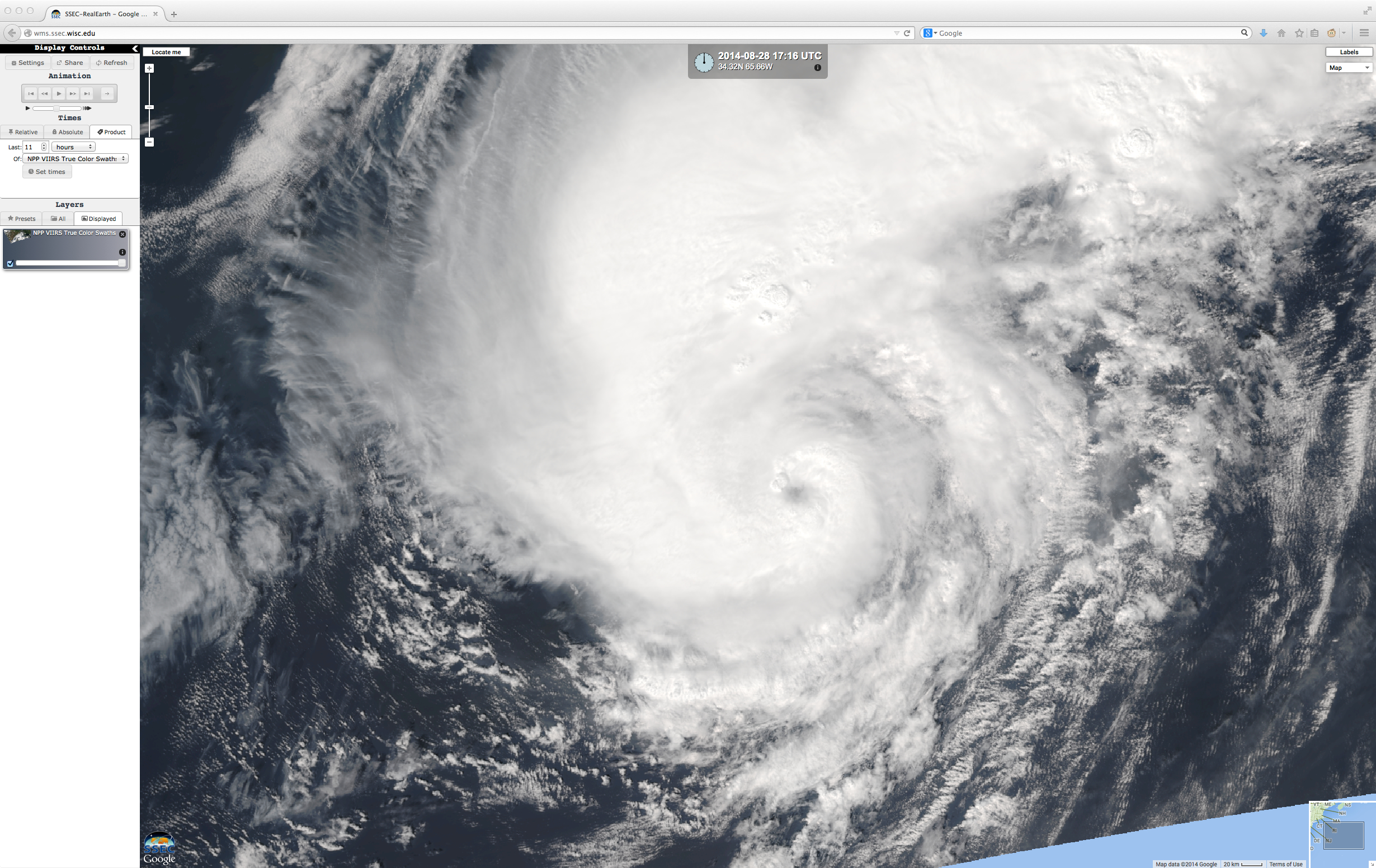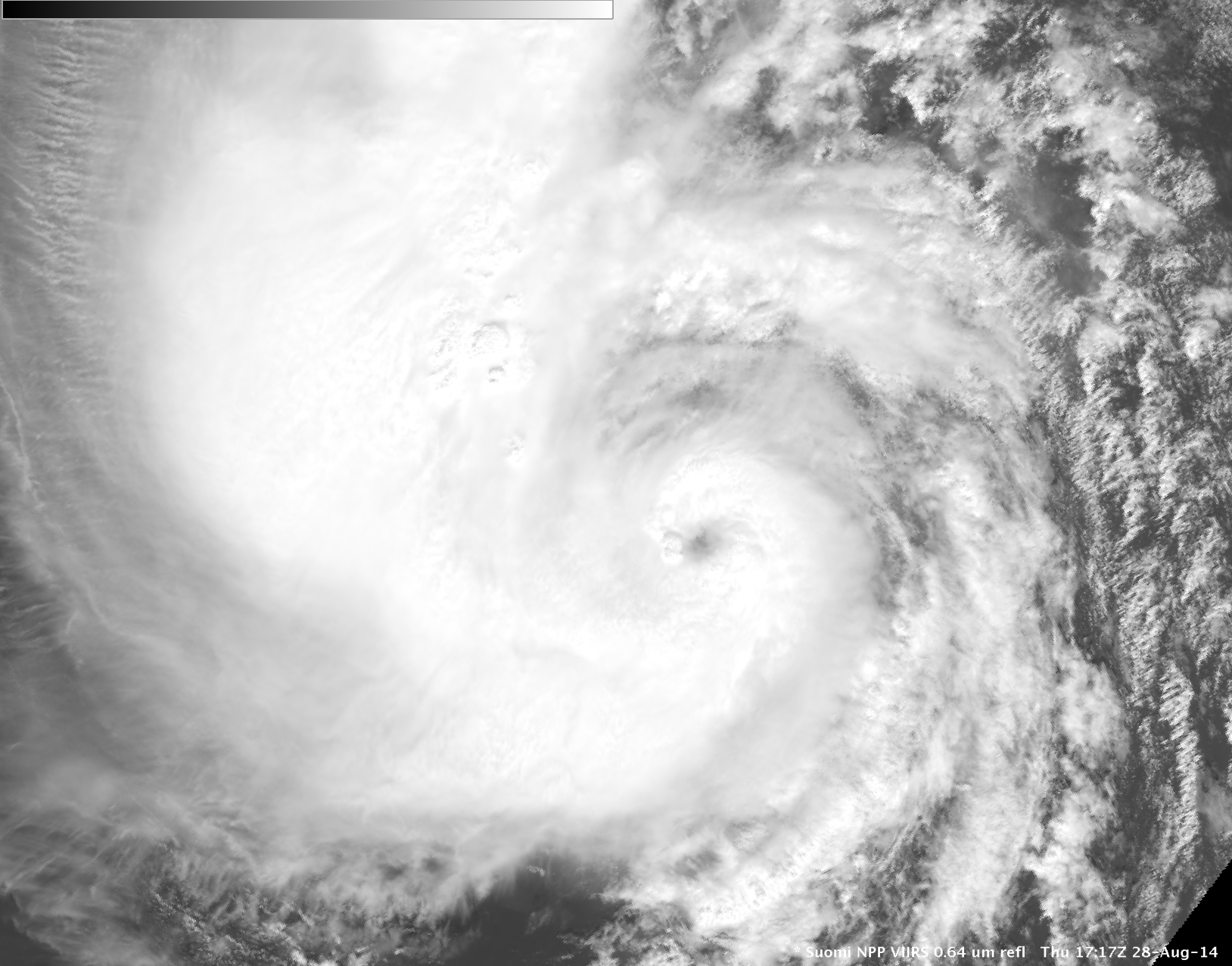
NASA Global Hawk flight path, with Cloud Height, Tropical Overshooting Tops, and Lightning data (click to play animation)
The NASA Global Hawk aircraft are once again being used to study tropical cyclones during the 2014 season. As part of CIMSS participation in GOES-R Proving Ground activities, a Global Hawk flight path tool was developed to display important parameters such as ACHA Cloud Top Height, Tropical Overshooting Tops, and lightning (above; click image to play animation). Global Hawk pilots use this product to navigate the aircraft around locations of potential turbulence.
To support the Global Hawk investigation of Tropical Storm Dolly on 02 September 2014, the GOES-13 satellite was placed into Rapid Scan Operations (RSO) mode to provide images at 5-7 minute intervals. GOES-13 0.63 µm visible channel images (above; click to play animation) and 10.7 µm IR channel images (below; click to play animation) are shown which cover the 3-hour period of the Global Hawk flight segment shown above. There is evidence of overshooting tops seen in the visible imagery, with cloud-top IR brightness temperatures of -80º C and colder (purple color enhancement).
View only this post Read Less


